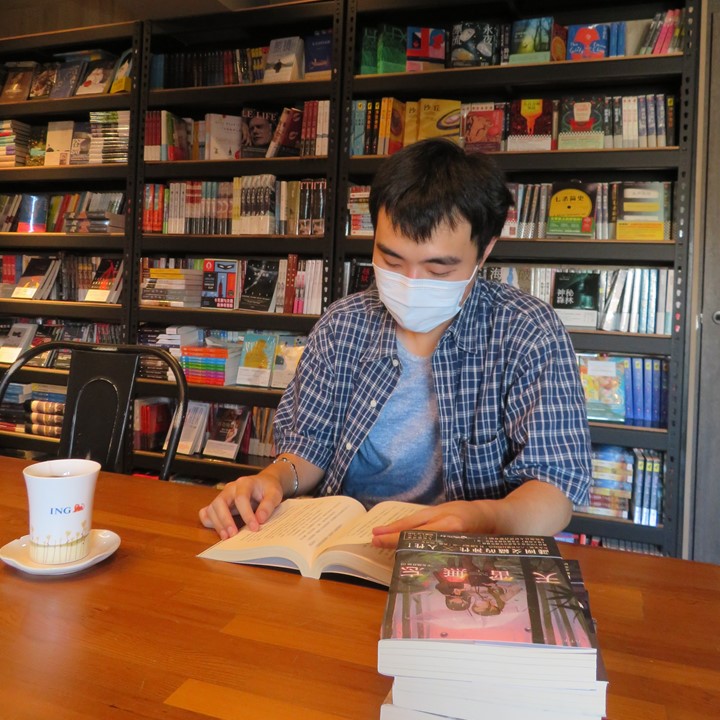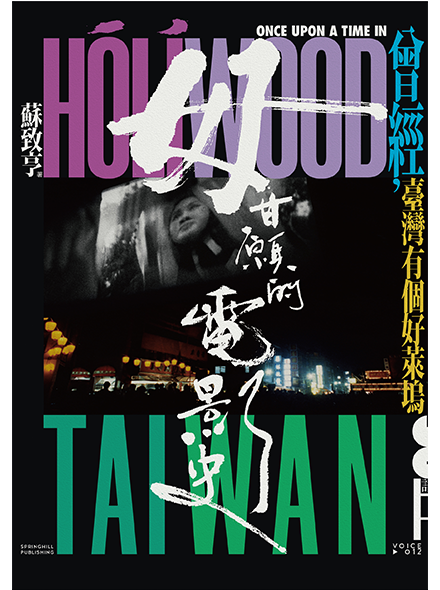Read Previous Part: https://booksfromtaiwan.tw/latest_info.php?id=102
Introducing a Historical Twist: Humanity
“One branch my family came to Taiwan with the Nationalists. No matter how you approach it, it’s a sensitive topic.[1] My grandfather served in a Nationalist military intelligence unit. I started thinking, wouldn’t it be interesting if you had a spy in that era who was actually working for the benefit of the local people?” So, Hassengo wrote just such a character into his series.
While discussing the February 28 Incident,[2] it becomes clear how much thought Hassengo has put into the matter: “I’m half descended from Taiwanese stock, half from the mainlanders who came across with the Nationalists. When I was young, everyone around me tiptoed around the subject of ethnicity. What I want to do is find a way for these two ethnicities to drop their mutual distrust.” Hassengo recalls that when the Nationalists arrived in Taiwan, many that worked in intelligence units were living under assumed identities. They had to bury their names, and even deny the families they once had. In the end, many of them were buried with only their assumed names to mark their graves. Even Hassengo’s grandfather, because of the intense political conflicts of the times, had to make a living from his humble clinic. Today, it is difficult for to appreciate the hardships suffered in those times.
Nonetheless, Hassengo maintains a sense of humor concerning his grandfather’s legacy. When he was visited his grandfather’s disciples to collect material for the novel, he was bemused by the conflicting interpretations he received. “In the end I found that most of them didn’t even completely believe themselves. They had to admit that more had been lost than had been preserved.” The idea expressed in NEVER SAY DIE, that “belief is the spell at the core of faith”, came directly from these experiences, Hassengo adds.
On Writing a Human Story
Regarding his long-term vision, Hassengo says that he originally had not intended MY SISTER IS A TEENAGE BONE COLLECTOR to be a tight-knit series; he hoped that readers could start from any book in the series without feeling they were missing out on important details. However, by the time he began work on the second book, GODS NEVER FORGET, Hassengo had already received feedback from readers and his editors that they would like stronger continuity between the books. In response, he introduced some foreshadowing and mysterious events that he hoped would give readers the cohesion they desired. Now that he has several books under his belt, Hassengo hopes to draw more heavily from his personal experiences in his writing, so his books can function as a kind of conversation between himself and his readers, between himself and the world.

MY SISTER IS A TEENAGE BONE COLLECTOR (VOL.2): GODS NEVER FORGET
Hassengo recalls that his original intention was to write crime fiction that revolved around characters, as opposed to a crime or incident, and the light novel seemed like the most suitable medium in which to pursue this. At the same time, he hopes to explore the rich, multidimensional possibilities that arise from setting these characters against a background of traditional Taiwanese culture.
Now that his books have the opportunity to step out onto the world stage, Hassengo feels grateful to be in a position to help promote Taiwanese culture, and give his readers a deeper understanding of this unique island nation.
[1] There is significant political conflict between the Taiwanese who are descended from settlers who came to the island 3-400 years ago, and those who are descended from the Nationalists who arrived in the late 1940’s, owing to the harsh rule initially imposed by the Nationalist government.
[2] Tensions between the local Taiwanese and the newly arrived Nationalists reached a head on February 28, 1947, when Nationalist soldiers opened fire on protestors, killing thousands of civilians.





.jpg)

.jpg)